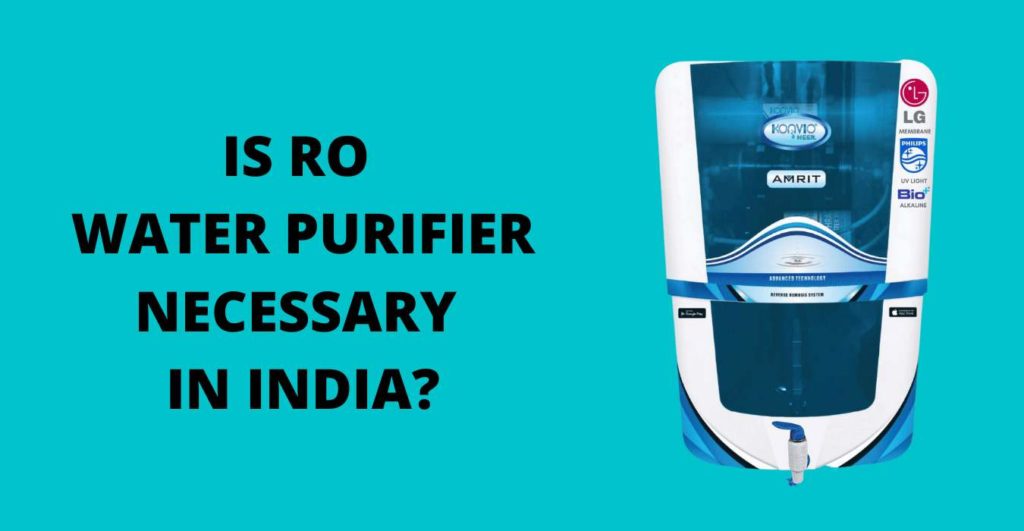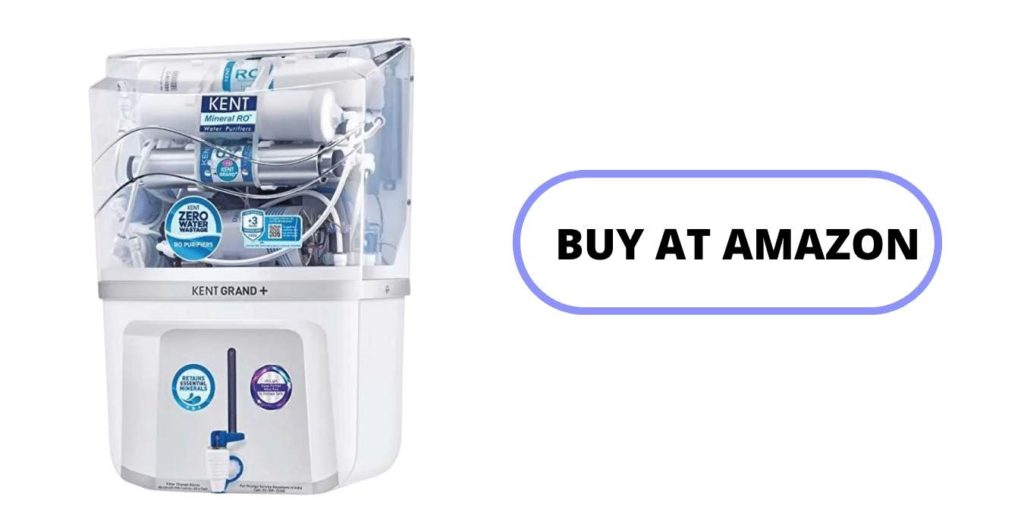Is Ro Water Purifier Necessary in India? You bet it is. With half a Billion lives at stake, we need to ensure that the water we consume is healthy enough. But how do we do this? Well, to start with, we have certain traditional methods to ensure that the water we consume can be rendered free from pollutants through boiling. This is one of the most effective yet cheap methods to make your water healthy enough. However, boiling is time-consuming and fuel-consuming too. So, what do we do? Installing RO is yet another efficient way to ensure you consume safe drinking water.

RO or Reverse Osmosis is one of the breakthroughs in health technology that has ensured safe drinking water reaches every home. The main principle of the working of RO is ‘Osmosis.’ This is a biological process that involves the movement of solvent from the area of low water concentration to that of High concentration. This occurs through a semi-permeable membrane and is much against the natural forces of nature. Hence an application of a pump is required to enhance the process in a RO machine.
To further understand this, one must know that Osmosis, under natural conditions, comprises water moving from the diluted area to a comparatively concentrated area. So, Reverse Osmosis is the opposite of this phenomenon; hence it requires the application of the pump to initiate and enhance the process.
Also Read: Best Water Purifier in India
Working of the RO
Do we need a water purifier? To understand this, we need to know the working of the RO water purifier. These are the few steps that take place within the RO water purifier:
- Prefiltration is the first step that occurs as soon as the water enters the purifier. This takes place with the help of a Carbon filter along with a sediment filter. This is to remove the Sediments and the Chlorine from the water that has the threat of clogging the RO membrane.
- The next stage is the RO membrane, where the dissolved particles that the naked eyes cannot see are also removed.
- The next stop is the Storage tank, where the purified water after going through the RO membrane is held for usage. The water purification process in the RO membrane continues as long as the storage tank is full. It later shuts off once full.
- On switching ON the drinking water faucet, the water emerges from the ‘Post-filter’ to further polish or clean the drinking water.
- We need the RO water purifier in a country like India, as it effectively removes the Chlorine, dissolved impurities, bad taste, odour, dirt, and debris. Hence, you can judge that a lot has been effectively removed from the original water body, ensuring you enjoy a nice glass of healthy drinking water.
Advantages of the RO Water Purifier
Let us check out some of the major benefits of the RO water purifier:
- Dissolved contaminants are greatly reduced.
- Sodium is reduced and eventually eliminated.
- Odor and bad taste removed.
- Is better compared to the packaged drinking water.
- The RO water purifier is easy to be installed and maintained.
- Can be fit in the kitchen of various sizes, small or large.
TDS and Safe Drinking Water
TDS is also known as the Total Dissolved Solids. These include most dissolved inorganic and organic salts, magnesium, Sodium, Calcium, Potassium, Sulfates, bicarbonates, and nitrates. This not only makes the water unsuitable for drinking but also makes the water ‘hard’ to consume. Other organic waste comprises sewage, industrial waste, and other impurities from Urban living. So what is safe TDS, and when do we know we need the RO water purifier for better filtration:
- TDS levels below 600 mg/l are suitable for drinking.
- As for TDS levels above 1000 mg/l, the water is considered highly unsuitable for drinking.
- It has been recommended by BIS standards that water purification through RO is essential when the TDS falls between the range of 500mg/l to 2000 mg/l.
Is RO Required In India?
To better understand this question, let us take a look at some of the statistics and data regarding the water conditions available in India:
- About 80% of the Indian population depends on the Groundwater reserves for their daily water consumption. This is the main source of water supply in a country like India.
- India is ranked 120 among the 122 nations worldwide regarding water quality. About 70% of the water is considered unfit for consumption, as it is highly contaminated.
- About 1.96 million houses in the country suffer from fluoride and Arsenic contamination. This is due to the water-borne diseases prevailing in the regions.
- Nitrate is the primary source of contamination in Ground Water, with about 387 districts getting affected. This is followed by Nitrate and Fluoride.
Also Read: Best Air Purifiers in India
Is Ro Water Purifier Necessary in India?: The Conclusion
Keeping in mind the above data and statistics, it is clear to declare that an RO water purifier is essential for a country like India, where the TDS levels of the same are quite high.
